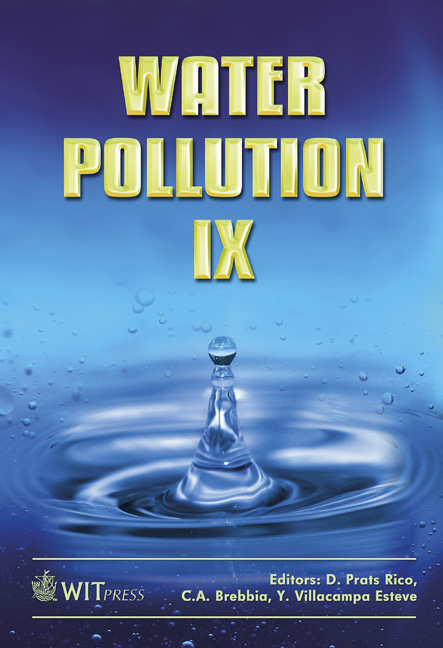Thermal Degradation Of Organic Pollutants In Sewage Sludge
Price
Free (open access)
Transaction
Volume
111
Pages
10
Page Range
405 - 414
Published
2008
Size
488 kb
Paper DOI
10.2495/WP080391
Copyright
WIT Press
Author(s)
R. Font, M. F. Gomez-Rico & A. Fullana
Abstract
Sewage sludge from a domestic water treatment plant was heated in an air atmosphere at different temperatures (105-500 ºC) for 1 hour in order to study the degradation of some organic pollutants. The compounds studied were: linear alkylbenzene sulphonates (LAS) with an alkylic chain of 10-13 atoms of carbon, and nonylphenolic compounds, including nonylphenol (NP) and nonylphenol ethoxylates with 1 and 2 ethoxy groups (NP1EO+NP2EO). These compounds were studied because they frequently exceed the limits proposed for sludge application to land in Europe. The lowest temperature did not show variations with respect to the initial sludge, but at 250 ºC the concentrations of LAS and NP were reduced by around 30% and NP1EO+NP2EO disappeared. Logically, at 500 ºC all compounds studied were totally removed. The study was completed with a thermogravimetric analysis of LAS, NP and NP1EO+NP2EO separately carried out at different times of treatment and different temperatures. The results showed that an increase of the treatment time at moderate temperatures (<250 ºC) reduced the concentrations of NP and NP1EO+NP2EO, which can be interesting since probably the beneficial properties of the sludge for the soil are practically not changed. Keywords: linear alkylbenzene sulphonates, nonylphenolic compounds, thermal degradation, sewage sludge. 1 Introduction Land application is one of the alternatives for the use of the great quantities of sewage sludge generated by WWTPs. When the sludge is applied to soils, their physical properties are improved and they receive nutrients such as nitrogen and phosphorous. However, this may cause the accumulation of potentiallyKeywords
linear alkylbenzene sulphonates, nonylphenolic compounds, thermal degradation, sewage sludge.





